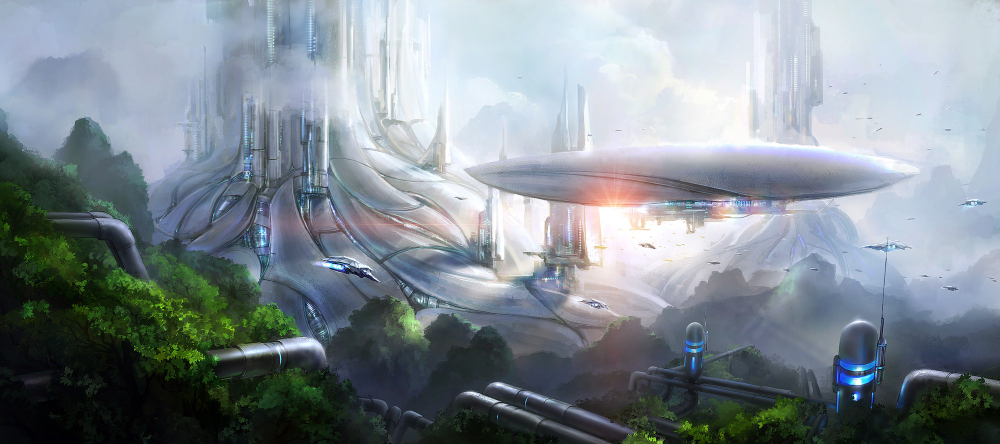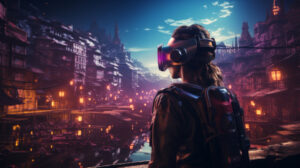A Guide to 3D Renders and their role in Video Game Advertising
Have you ever wondered how 3D renders are transforming the worlds of video games and advertising? With the rise of 3D animation, video game aficionados have experienced a dramatic development in recent years. This dynamic shift has radically altered our perception of digital gaming, bringing in an era in which virtual environments and characters come to life in new ways.
In this blog, we’ll look at how 3D renders have evolved into a key part of the personalized marketing landscape.
The vital function of 3D models and renders is at the heart of the 3D animation revolution. Rich in detail and intricacy, 3D models bring characters, objects, and environments to life, promoting a dynamic gaming experience. The 3D models, which include everything from textures and lighting to animations, add visual sophistication to these virtual worlds, making them not only visually appealing but also emotionally fascinating.
While 3D renders have transformed the world of video games, their importance does not stop there. A fascinating aspect of this technical advance is the connection between 3D modeling and tailored marketing. As companies strive to create more focused and engaging marketing efforts, 3D renders reveal to be a versatile tool for delivering personalized information and experiences that connect with customers on a deeper level.
1. The Influence of 3D Renders in Video Game Advertising
Step into the shoes of a virtual adventurer as you explore unknown regions and engage in epic conflicts. What makes this experience so enthralling? It’s the product of precisely crafted 3D representations of the game universe. The attention to detail in 3D graphics is responsible for increasing realism and immersion, allowing gamers to be more than just spectators in the virtual environment.
Using 3D render to create memorable movie characters
Video games have given rise to renowned personalities who have transcended the gaming realm. These characters are frequently brought to life via 3D rendering. 3D renders generate characters that resonate emotionally with gamers, making them unforgettable figures in the world of gaming, with rich expressions, lifelike actions, and complicated relationships.
Highlighting Main Characters in Video Games
The main characters are the beating heart of video games. They serve as anchors for players in the game’s narrative, and their progression is critical to the player’s engagement with the tale. These protagonists come to life with amazing detail thanks to 3D renders. Every aspect, from their facial expressions to their body language, contributes to a memorable gaming experience.

Analysis of 2D Animation and Traditional Marketing
The transition from traditional 2D animation to 3D renderings is a dramatic and profound change. 3D animation gives images depth and dimension, altering how we experience and interact with games. In the world of advertising, this turns into a potent instrument for attracting the audience’s attention and imagination. Traditional marketing approaches, which are frequently based on static photos and text, frequently fail to compete with the dynamic, immersive world of 3D models.
Making Use of 3D Renders in Cartoon Movies and Animation Films
The impact of 3D rendering extends beyond video games and blends smoothly into the world of cartoon movies and animation films. Characters that were previously limited by their two-dimensional nature can now be augmented with all of the depth and personality that 3D representations provide. This has resulted in an animation renaissance, with directors and animators embracing the possibilities given by 3D rendering technology.
2. Personalized Marketing in Video Game Advertising
Personalization is the magic wand that marketers wave to catch their audience’s attention and commitment in an age of information overload and ongoing digital inputs. Personalized marketing is essential in the field of video game advertising.
Considering the Value of Personalization
Personalization is an essential component of good marketing tactics. Personalization in video game advertising refers to presenting content that resonates with players on an individual level, making the message not just relevant but also emotionally engaging.
Personalized marketing guarantees that the correct message reaches the right individual at the right time, whether through personalized suggestions, in-game interactions, or custom-tailored commercials. This connection between the game and the user is what generates a deeper sense of engagement and, eventually, conversions.
How 3D Characters and Renders Play an Important Role
3D characters and renders are more than just eye-catching; they also play an important role in creating targeted marketing campaigns. They provide the experience with a sense of emotion, making it simpler to form relationships between the player and the game, or between the consumer and the brand.
3D renders in personalized marketing can be tailored to represent a player’s or consumer’s choices, demographics, and behaviors. A gamer, for example, may receive in-game adverts depicting characters and scenarios that correspond to their gaming history and preferences. These personalized components make the user feel seen and understood, fostering a stronger bond between the game and the brand that created it.
3D characters develop into iconic personalities, cherished by players. Their capacity to transmit emotions and tales through lifelike animations strengthens the emotional connection, making customized marketing methods more effective. As a result, gamers aren’t just playing a video game; they’re embarking on a journey with characters they care about.

3. The Technology Behind 3D Renders
3D Animation and Rendering Development
Understanding the concepts underlying 3D renders is essential for comprehending the level of intricacy attained in present-day video games.
From the early days of basic polygons to today’s complex shading and rendering techniques, the field has advanced dramatically. Game developers and animators have used more powerful hardware to create increasingly lifelike and immersive experiences. This progress has changed the way we perceive and interact with virtual environments and characters, making gaming more engaging and lifelike than ever before.
Tools and Software for 3D Model Creation
Creating 3D models is a time-consuming procedure that necessitates the use of specialized tools and software. To design, sculpt, and animate 3D figures and environments, artists and developers employ a variety of applications, including Autodesk Maya, Blender, and Cinema 4D. These techniques enable the production of lifelike people and immersive game worlds by allowing for complex modeling, texturing, and animation.
Furthermore, advances in 3D modeling software have made it more accessible to a broader variety of developers and designers, resulting in the democratization of 3D content creation. This has paved the way for more creative and novel uses of 3D renders in a variety of sectors, including film, architecture, and virtual reality.
Bringing 3D Characters to Life
Have you ever wondered how your favorite video game characters evolve from concept to fully developed three-dimensional beings? The procedure is a carefully planned series of phases that includes design, modeling, texturing, rigging, animation, and rendering.
Designers begin with a character concept, sketch, or notion. They then develop a 3D model of the character that determines its shape and structure. Texturing is used to add features such as skin, clothing, and items. Rigging provides the character a skeletal structure and enables realistic movement.
Following that is animation, which brings the character to life through a series of movements and expressions. Finally, rendering adds the finishing touches to the model, such as lighting and shading, to create a visually stunning character that can integrate into the game world.
This technique demonstrates the tedious work that goes on behind the scenes to generate the 3D characters that players interact with while immersing themselves in the game experience.

4. Applications in the Real World
Advertisements for video games
Video game commercials are more than just marketing materials; they serve as a vital link between the gaming business and its target audience. The use of 3D renders has had a significant impact on how these advertising are conceived and produced.
Video game commercials attempt to be more than just visually appealing; they want to give potential gamers a tantalizing glimpse into the virtual worlds they might soon inhabit. This is when 3D renderings come in handy. These images allow for incredible detail in displaying the game’s characters, locations, and gameplay. Gamers can experience the action as though they were present on the battlefield, exploring a mysterious land, or conversing with genuine individuals.
Film Characters and Their Influence on Audiences
While the video gaming business embraces 3D graphics to create immersive experiences, the film industry has undergone a similar transition. 3D characters have made their imprint on the big screen, enhancing the moviegoing experience in previously inconceivable ways.
Movie characters are no longer limited to 2D domains, and the influence of 3D characters and renders extends beyond aesthetics. These characters engage with the viewer on a deeper level thanks to their elaborate designs, expressive expressions, and lifelike animations. The nuances of a character’s expression, the nuances of their movement, and the plausibility of their actions are what draw viewers into the plot.
Characters portrayed in 3D have played critical roles in the success of countless blockbuster films. Consider the amazing lifelike creatures in “Jurassic World,” the charming individuals in “Avatar,” or the famous superhero costumes in the Marvel Cinematic Universe. Audiences are no longer passive observers; they are active participants in the tale, emotionally invested in the conclusion.
Video Game and Movie Cross-Promotion
Video games and movies have grown increasingly inextricably linked, forming alliances that go beyond basic marketing.
A popular movie franchise, for example, may cooperate with a game developer to produce a game set in the film’s universe. In such circumstances, 3D representations allow the gaming experience to blend in with the aesthetics and characters of the film. This cross-promotion benefits both businesses by allowing film fans to delve further into the tale through gaming while also introducing gamers to the cinematic world.
In addition, film companies have been using 3D characters and renders in movie-based video game promotions, generating interactive trailers and mini-games that build anticipation for the approaching feature release. Gamers may immerse themselves in the world of the film, identifying with the characters and storyline even more.
As these two entertainment industries continue to merge, 3D renderings’ role in promoting cross-promotion is anticipated to grow, enriching fans’ experiences in both areas.

5. 3D Rendering’s Future in Video Game Advertising
New Trends and Innovations
The future of 3D renders in video game advertising has exciting possibilities. Emerging trends and advancements will improve the immersive quality of gaming experiences even further.
One significant trend is the incorporation of augmented reality (AR) and virtual reality (VR) into video game ads. As AR and VR technology become more available, advertisers are looking into ways to develop interactive and immersive ad campaigns that allow gamers to jump right into the game environment. 3D renders will be critical in generating these immersive AR and VR experiences.
Ray tracing technology will improve the visual fidelity of 3D representations in video game advertising. Ray tracing improves the realism of lighting, shadows, and reflections, giving an unrivaled level of visual quality to game advertisements. This will make advertising materials practically indistinguishable from actual gameplay.
Industry Predictions
In terms of projections for the future the industry is expected to see ongoing rise in the use of 3D renders in video game advertising. As interactive, in-game commercials become more common and advertisers find new ways to engage players, the distinctions between gaming and advertising will become even more blurred.
Furthermore, incorporating artificial intelligence (AI) into advertising may allow for even more advanced personalisation. Artificial intelligence algorithms can monitor player behavior and preferences in real time, allowing for dynamic changes to in-game advertising.

6. Conclusion
3D renders in video game advertising have a bright future. Ongoing innovation and originality distinguish the evolution of 3D animation and rendering. The combination of 3D renders and marketing is gearing up to strengthen further, ushering in an era of immersive, tailored, and interactive advertising. The future of 3D animation and marketing is bright, with virtual worlds and digital experiences enthralling audiences. Personalized marketing is no longer an option; it is a requirement for engaging today’s discriminating consumers amid the digital cacophony. Do you want to learn more about the world of 3D renders? Visit 3daily to discover a world of possibilities and inspiration!




